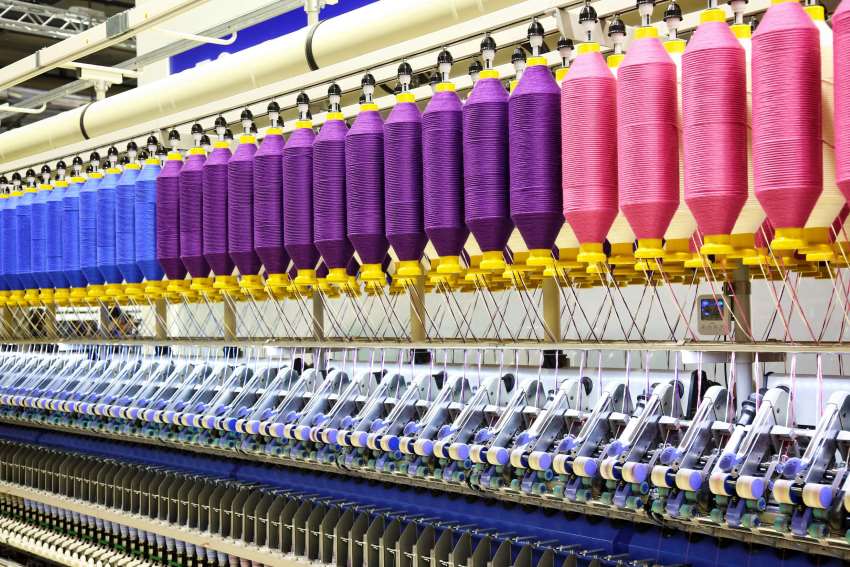
The recent crisis in Bangladesh, with its crucial role in the global textile industry, has sparked speculation about potential gains for India's textile sector. While short-term disruptions may benefit Indian garment manufacturers, a complex interplay of factors, including China's influence and India's own manufacturing capabilities, will determine the extent of this opportunity.
Bangladesh's textile prowess and the crisis
Bangladesh's textile sector has been a remarkable success story, accounting for over 80% of the country's total exports in 2022-23. Its competitive advantages stem from a combination of factors, including access to cheap Chinese fabrics, lean labour laws, and large-scale manufacturing facilities.
The ongoing turmoil in Bangladesh, marked by political unrest and labour strikes, has disrupted production and raised concerns among global buyers. This situation has prompted discussions about whether India, with its own strengths in the textile sector, can fill the potential void.
Potential benefits for India
Short-term gains: The immediate impact of Bangladesh's crisis could be favourable for Indian garment manufacturers, particularly in regions like Coimbatore, Tirupur, and Delhi, which are known for their garment manufacturing prowess. Western buyers, seeking to diversify their supply chains, may turn to India for fulfilling orders, especially for the upcoming holiday season.
Long-term prospects: In the long run, India's ability to capitalize on this opportunity will depend on addressing several challenges and leveraging its strengths.
• Complementary strengths: India and Bangladesh have distinct strengths in the textile value chain. Bangladesh excels in large-scale garment manufacturing, while India specializes in smaller, flexible orders with value-added requirements. This complementarity offers the potential for synergistic collaboration, where India can supply raw materials and fabrics to Bangladesh, which can then focus on its garment manufacturing expertise.
• Data table: India and Bangladesh's strengths in the textile sector
|
Feature |
India |
Bangladesh |
|
Manufacturing scale |
Smaller, flexible orders |
Large-scale production |
|
Product focus |
Value-added, niche products |
Mass-market garments |
|
Labour costs |
Higher |
Lower |
|
Fabric sourcing |
Domestic and imported |
Primarily imported from China |
Table 2: India-Bangladesh Textile Trade - A Synergistic Potential
|
Category |
India's Strength |
Bangladesh's Strength |
Potential Synergy |
|
Fiber Production |
Strong cotton and man-made fiber production base |
Reliant on imports, including from India |
India can supply fibers to Bangladesh |
|
Yarn Production |
Significant spinning capacity |
Reliant on imports, including from India |
India can supply yarns to Bangladesh |
|
Fabric Production |
Diverse fabric manufacturing capabilities |
Reliant on imports, primarily from China |
India can supply fabrics to Bangladesh, reducing its dependence on China |
|
Garment Manufacturing |
Growing but faces challenges in large-scale production |
Strong in large-scale, bulk production |
India can focus on value-added and niche segments, while Bangladesh continues to cater to mass-market demands |
The China Factor
China plays a pivotal role in both Bangladesh's and India's textile sectors. Bangladesh's competitive pricing is largely due to its reliance on cheaper Chinese fabrics. India, on the other hand, has been trying to reduce its dependence on Chinese imports.
Challenges:
• Pricing: India may struggle to match Bangladesh's pricing due to the latter's access to cheaper Chinese fabrics. This could hinder India's ability to attract buyers looking for cost-effective options.
• Supply chain disruptions: The crisis in Bangladesh could disrupt the supply of fabrics and other raw materials from China, impacting both Bangladesh's and India's textile industries.
Opportunities:
• China Plus One strategy: The ongoing turmoil in Bangladesh could further accelerate the western world's China Plus One strategy. India, with its vast textile manufacturing capabilities and a stable political environment, could emerge as a preferred alternative for buyers seeking to diversify their supply chains beyond China and Bangladesh.
India's Path Forward
To fully capitalize on the Bangladesh opportunity and reduce its dependence on China, India needs to focus onIncreasing domestic capacity particularly in areas like man-made fibers and specialty garments, which are in high demand globally. And promoting collaboration between Indian and Bangladeshi textile manufacturers can create a win-win situation for both countries. India can supply fabrics and raw materials to Bangladesh, while Bangladesh can leverage its garment manufacturing expertise.












